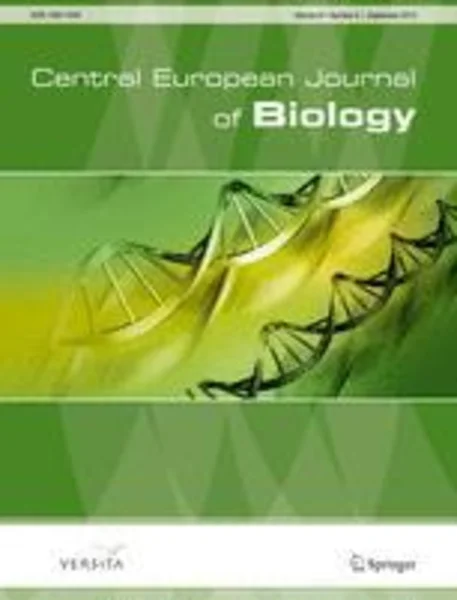-
compensatory partitioning of carbon budgets by the grass shrimp (palaemonetes pugio) and implications for predator prey relationships
جزئیات بیشتر مقاله- تاریخ ارائه: 1392/07/24
- تاریخ انتشار در تی پی بین: 1392/07/24
- تعداد بازدید: 880
- تعداد پرسش و پاسخ ها: 0
- شماره تماس دبیرخانه رویداد: -
carbon utilization and allocation were examined between two populations of shrimp (palaemonetes pugio) to determine the possible effects of living in an area of high anthropogenic impact. carbon assimilation has been studied in p. pugio, but no study has looked at how assimilation might be influenced by contaminants. anthropogenic effects on carbon assimilation in grass shrimp represent a major unmeasured impact on the carbon budget of multi-cellular organisms in estuaries and near shore environments. the influence of anthropogenic contamination on carbon assimilation has implications for predicting the environmental impact of contaminants, for models of estuarine function, and trophic transfer from the dominant macroscopic detritus processor to species of direct economic importance. shrimp budgets were compared between two populations, one from a highly polluted marsh creek system in northern new jersey, and one from a clean reference site in southern new jersey. all components of the carbon budgets were measured directly including carbon allocated to reproduction. carbon lost to respiration was lower in shrimp from the polluted system allowing them to have increased reproductive output. this is examined in the context of previous studies that show lowered predation by a piscine predator at the polluted site, resulting in a trophic cascade and changes in ecosystem function due to anthropogenic impacts.
مقالات جدیدترین رویدادها
-
استفاده از تحلیل اهمیت-عملکرد در ارائه الگوی مدیریت خلاقیت سازمانی و ارائه راهکار جهت بهبود
-
بررسی تاثیر ارزش وجوه نقد مازاد بر ساختار سرمایه شرکت های پذیرفته شده در بورس اوراق بهادار تهران
-
بررسی تأثیر سطح افشای ریسک بر قرارداد بدهی شرکت های پذیرفته شده در بورس اوراق بهادار تهران
-
بررسی تأثیر رتبه بندی اعتباری مبتنی بر مدل امتیاز بازار نوظهور بر نقد شوندگی سهام با تأکید بر خصوصی سازی شرکت ها
-
تأثیر آمیخته بازاریابی پوشاک ایرانی بر تصویر ذهنی مشتری پوشاک ایرانی (هاکوپیان)
-
تحلیل تنش های پسماند ناشی از جوشکاری در صفحات دارای بازشو و سخت کننده
-
مروری بر کیفیت در کلاس جهانی در کاهش هزینه ها
-
بررسی فقهی عدم مشروعیت شرکت های هرمی بر مبنای قاعده غرور
-
ارزیابی عملکرد دریچه های آبگیر در شبکه های آبیاری نکو آباد و آبشار
-
رگرسیون (پارامتری) استوار و انتخاب متغیر با روش کمترین قدرمطلق انحرافات موزون با تاوان لاسو برای داده های بیمه
مقالات جدیدترین ژورنال ها
-
مدیریت و بررسی افسردگی دانش آموزان دختر مقطع متوسطه دوم در دروان کرونا در شهرستان دزفول
-
مدیریت و بررسی خرد سیاسی در اندیشه ی فردوسی در ادب ایران
-
واکاوی و مدیریت توصیفی قلمدان(جاکلیدی)ضریح در موزه آستان قدس رضوی
-
بررسی تاثیر خلاقیت، دانش و انگیزه کارکنان بر پیشنهادات نوآورانه کارکنان ( مورد مطالعه: هتل های 3 و 4 ستاره استان کرمان)
-
بررسی تاثیر کیفیت سیستم های اطلاعاتی بر تصمیم گیری موفق در شرکتهای تولیدی استان اصفهان (مورد مطالعه: مدیران شرکتهای تولیدی استان اصفهان)
-
شناسایی و رتبه بندی فاکتورهای روحی اثرگذار بر کم کردن حوادث شغلی
-
عوامل مؤثر بر مسئولیت پذیری اجتماعی شرکت ها
-
investigating the photocatalytic activity of tio2@wo3/zno catalyst in the waste water treatment containing alkanolamine contaminants
-
the impact of satellite programs on the family based on the international law and human rights
-
comparison of the results of pediatric heart surgeries in the pediatric intensive care unit of shahid madani heart hospital in tabriz




سوال خود را در مورد این مقاله مطرح نمایید :